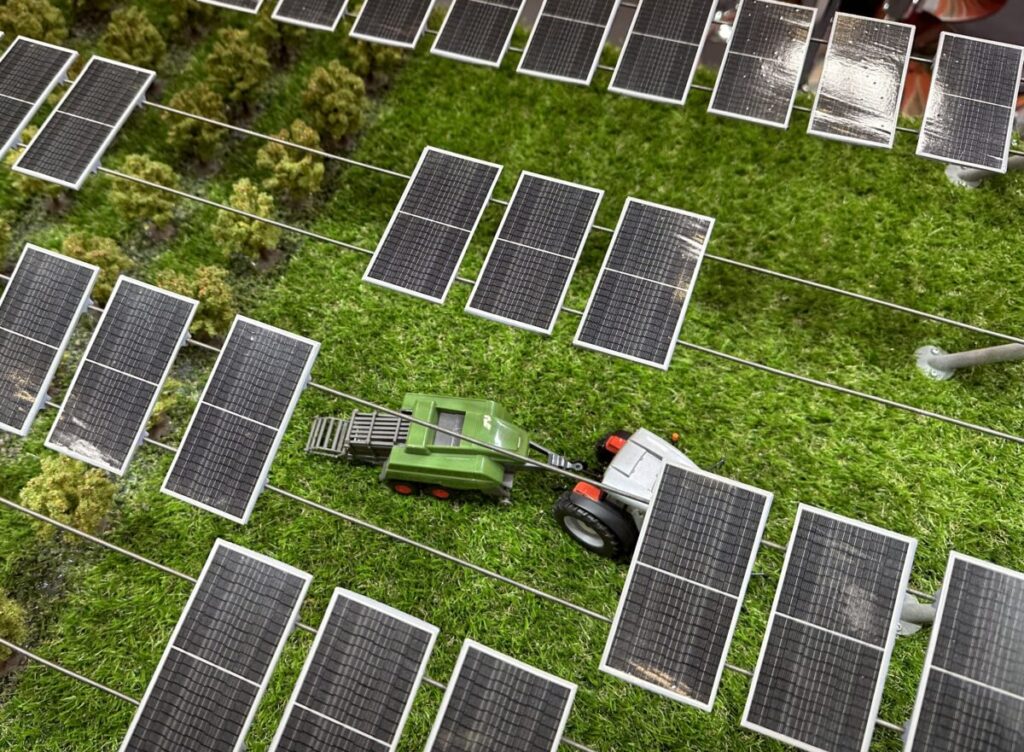Aritra Ghosh, academic from the University of Exeter, explains pv magazine A multidisciplinary approach is needed to unlock the full potential of agricultural voltaics. Discussing a new paper comparing static and tracker agrivoltaic systems in the UK, the researcher argues that a better understanding of microclimates among modules and how PV affects crop biochemistry is needed.
According to British researcher Aritra Ghosh, a better understanding of the microclimate and the effects of above-ground PV on crop biology is needed to improve the land use efficiency of agricultural voltaic installations.
Speak with pv magazine on the publication of a new paper comparing the effects of static and tracker-mounted agricultural voltaic installations, Ghosh said that academics specializing in PV still have knowledge gaps when it comes to crop science, “and that the crop people are not understanding the PV aspect understand. We need more time to develop, I think that applies to Germany, France, Europe, wherever. They don’t have the data.”
Ghosh is a lecturer at the University of Exeter and author of “Evaluation of tracking bifacial solar PV based agrivoltaic systems in the UK”, published in Solar energy. The study uses simulation tools to investigate how a PV system could be integrated with potato farms in the UK. Sites covering key UK regions were included in the article, in which researchers used PVsyst design software in combination with an Agrotechnology Transfer (DSSAT) decision support system to produce energy and agricultural output data for hypothetical installations.
The simulations revealed significant differences in solar radiation, temperature and precipitation at the studied locations, which affect electricity and agricultural production. Nevertheless, some trends emerged. Bifacial PV modules on tracker mounting systems are the best installation type for solar energy production, according to the model. The study found that 440W bifacial panels mounted on a tracker generated an average of 24.6% more energy than static bifacial systems.
However, trackers also had a clear effect on crop yield. An installation consisting of single-sided panels on a tracking installation modeled for Birmingham resulted in a crop yield of only 65.57% compared to a static two-sided installation with the same ground cover.
Static dual-sided agrivoltaic installations were the most positive installations for crop yield. In terms of land efficiency (LER), static installations also emerged as the most efficient for extracting value from an area, although Ghosh says LER is not a perfect tool for agrivoltaic energy decision-making. Instead, the researcher claimed that a better understanding of the relationship between PV installations and crop yield is needed to create a solution that can inform farmers about what works best on their land.
“There are two different sciences happening,” Ghosh said. “We need to understand how crops interact with nature because that will influence PV performance. If I understand correctly, some crops result in a more cooling ambient temperature and some crops do not. This will have a further impact on power generation because the PV has a temperature gradient. So we need more interaction between these two sciences. It’s not that easy, but yes, this is feasible.”
Ghosh added that as research continues, it may be possible to develop an app or software to give farmers recommendations tailored to their locality.
“Maybe in a few years we can produce a kind of app where farmers don’t have to understand all the science, but know the most important elements and the science happens at the back. Suppose they want to grow potatoes, they put in a number of basic elements and that tells them what the best solution is. We still need more time for that, but it’s not just about solar radiation, there are many factors,” he said.
This content is copyrighted and may not be reused. If you would like to collaborate with us and reuse some of our content, please contact: editors@pv-magazine.com.

